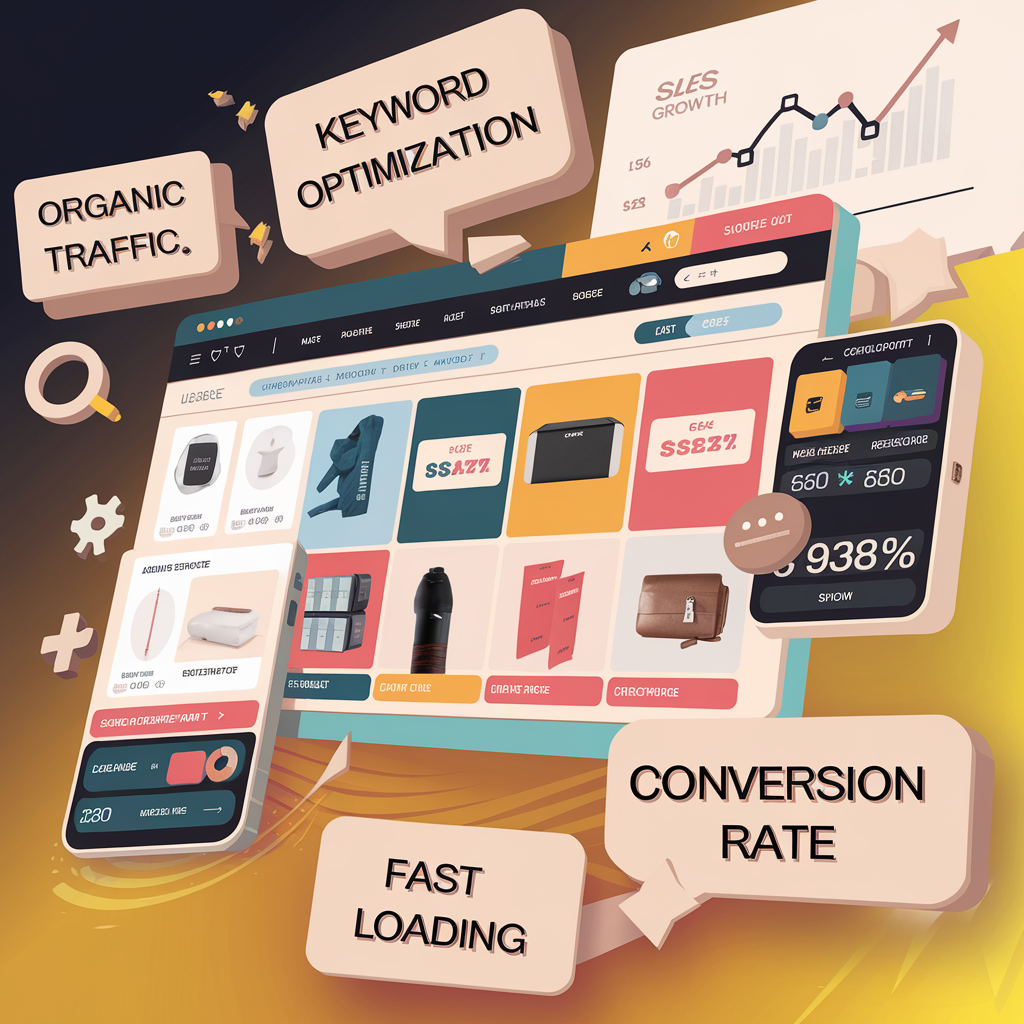How can I improve my eCommerce conversion rate through SEO?
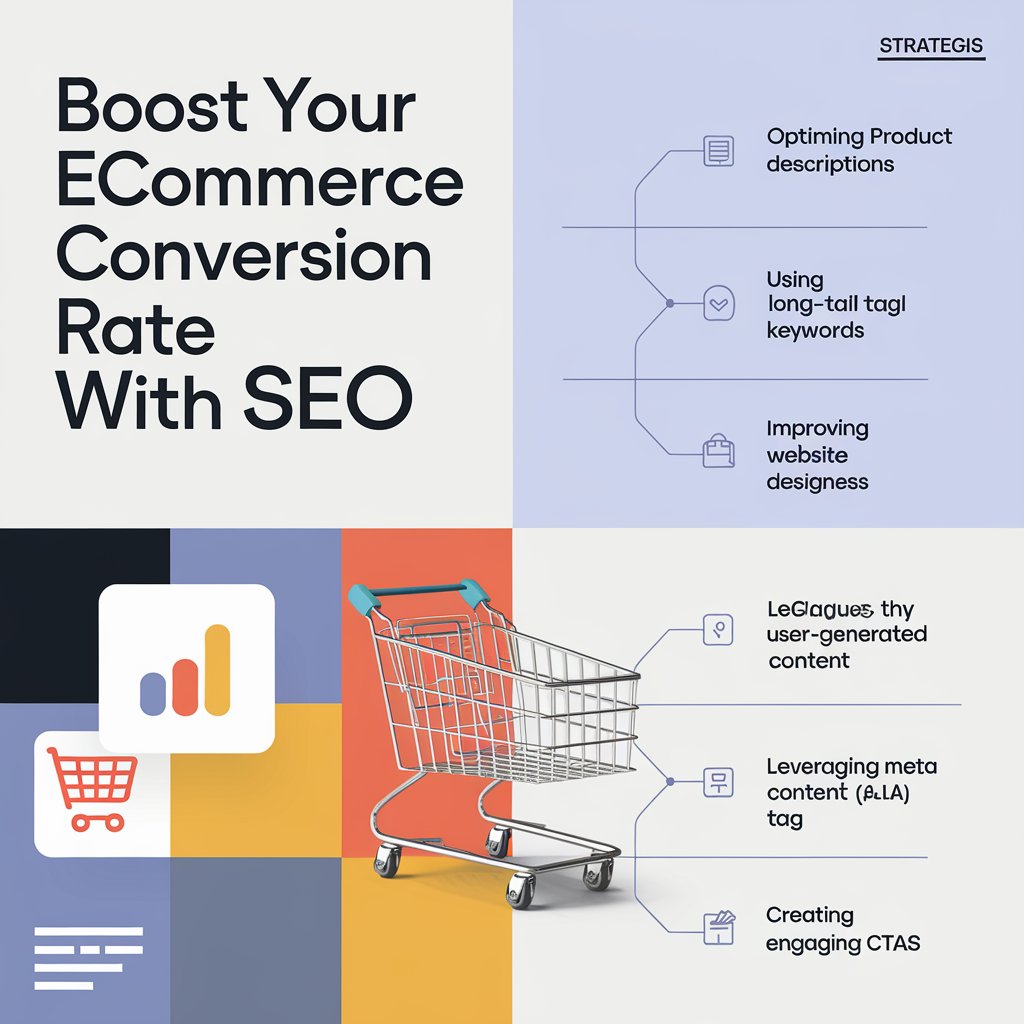
In the world of eCommerce, conversion is king. Every click, every page view, every interaction on your site is a potential sale. But how do you turn those potential sales into actual ones? The answer lies in eCommerce conversion rate optimization. This process involves fine-tuning your online store to encourage visitors to complete a purchase. But it’s not just about making sales. It’s about providing a seamless, enjoyable user experience that keeps customers coming back for more.
And one of the most effective ways to achieve this is through SEO. SEO, or Search Engine Optimization, is a strategy used to increase a website’s visibility on search engine results pages. By optimizing your site for SEO, you can attract more targeted traffic. These are the visitors who are most likely to be interested in your products, and therefore, most likely to convert.
But SEO and conversion rate optimization are not standalone strategies. They work best when used together, creating a synergy that can significantly boost your eCommerce success. In this comprehensive guide, we’ll explore how you can improve your eCommerce conversion rate through effective SEO strategies and user experience design.
Whether you’re an eCommerce business owner, a digital marketer, an SEO professional, or a user experience designer, this guide is for you. We’ll provide actionable insights and best practices for optimizing your online store to drive more sales and revenue. So, are you ready to take your eCommerce business to the next level? Let’s dive in.
Understanding eCommerce Conversion Rate Optimization
eCommerce Conversion Rate Optimization, or CRO, is a systematic approach to improving the performance of your online store. It involves understanding how users navigate your site, what actions they take, and what’s stopping them from completing your desired outcomes.

The primary goal of CRO is to increase the percentage of visitors who complete a desired action on your website. This could be making a purchase, signing up for a newsletter, downloading a resource, or any other action that contributes to your business goals. But to effectively optimize your conversion rate, you first need to understand its importance and how to define your eCommerce conversion rate goals.
The Importance of Conversion Rates for Online Businesses
In the eCommerce world, a high amount of traffic is a good start. But it’s not enough. What truly matters is what that traffic does once it lands on your site. That’s where conversion rates come in. Your conversion rate is a key indicator of your site’s effectiveness at turning visitors into customers. It’s a measure of your site’s ability to persuade visitors to take the action you want them to take.
A high conversion rate means your site is well-designed, persuasive, and easy to navigate. It also means you’re offering products or services that are appealing and relevant to your target audience. In short, a high conversion rate is a clear sign of eCommerce success.
Defining Your eCommerce Conversion Rate Goals
Before you can start optimizing, you need to define your eCommerce conversion rate goals. What does success look like for your online store? Is it a certain number of sales per month? A specific conversion rate percentage? Or perhaps it’s a decrease in cart abandonment rates? Whatever it is, having clear, measurable goals is crucial.
These goals will guide your optimization efforts and provide a benchmark against which you can measure your progress. Remember, your goals should be specific, measurable, achievable, relevant, and time-bound (SMART). This will ensure they’re realistic and keep you focused on achieving tangible results for your eCommerce business.
The Role of SEO in Conversion Rate Optimization
Search Engine Optimization (SEO) plays a crucial role in eCommerce conversion rate optimization. It’s not just about driving traffic to your site. It’s about attracting the right kind of traffic – visitors who are likely to convert because they’re interested in what you’re offering.
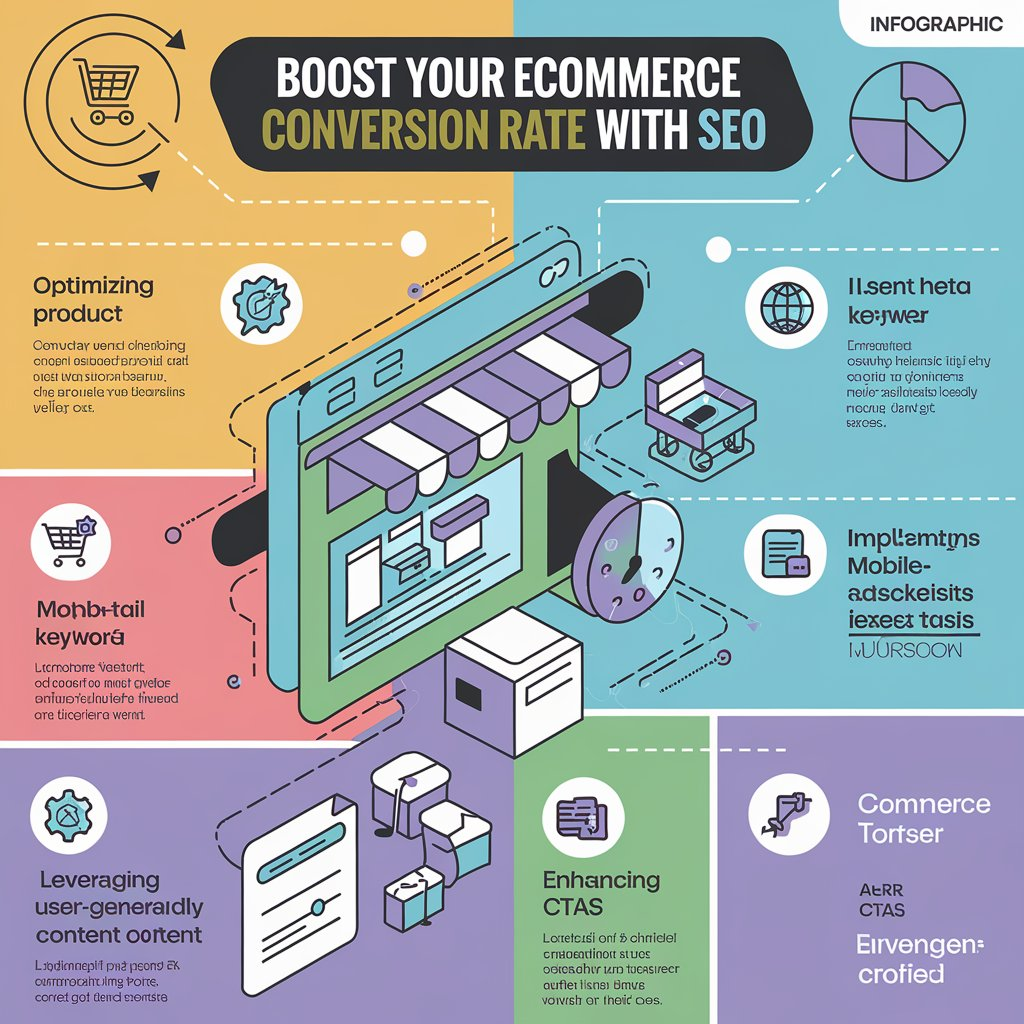
SEO helps your site appear in search results when users type in queries related to your products or services. This increases the visibility of your online store to potential customers who are actively looking for what you sell. By optimizing your site for search engines, you can attract more of this high-intent traffic, leading to higher conversion rates.
How SEO Impacts User Experience and Conversion Rates
SEO and user experience (UX) go hand in hand. Search engines like Google prioritize sites that provide a good user experience. This includes factors like site speed, mobile-friendliness, easy navigation, and high-quality, relevant content. All these factors not only help your site rank higher in search results but also contribute to a positive user experience.
And a positive user experience is key to driving conversions. When users can easily find what they’re looking for on your site, they’re more likely to make a purchase.
Keyword Research for Targeted Traffic and Higher Conversions
Keyword research is a fundamental aspect of SEO. It involves identifying the words and phrases that potential customers use when searching for your products or services. By optimizing your site for these keywords, you can attract more targeted traffic. And targeted traffic is more likely to convert because these visitors are already interested in what you’re offering.
Keyword research also helps you understand your customers better. By knowing what terms they use and what questions they’re asking, you can tailor your content to meet their needs and drive more conversions.
Leveraging User Experience Design for Conversion Success
User Experience (UX) design is a critical factor in eCommerce conversion rate optimization. It’s all about creating a seamless, enjoyable experience for your site visitors.
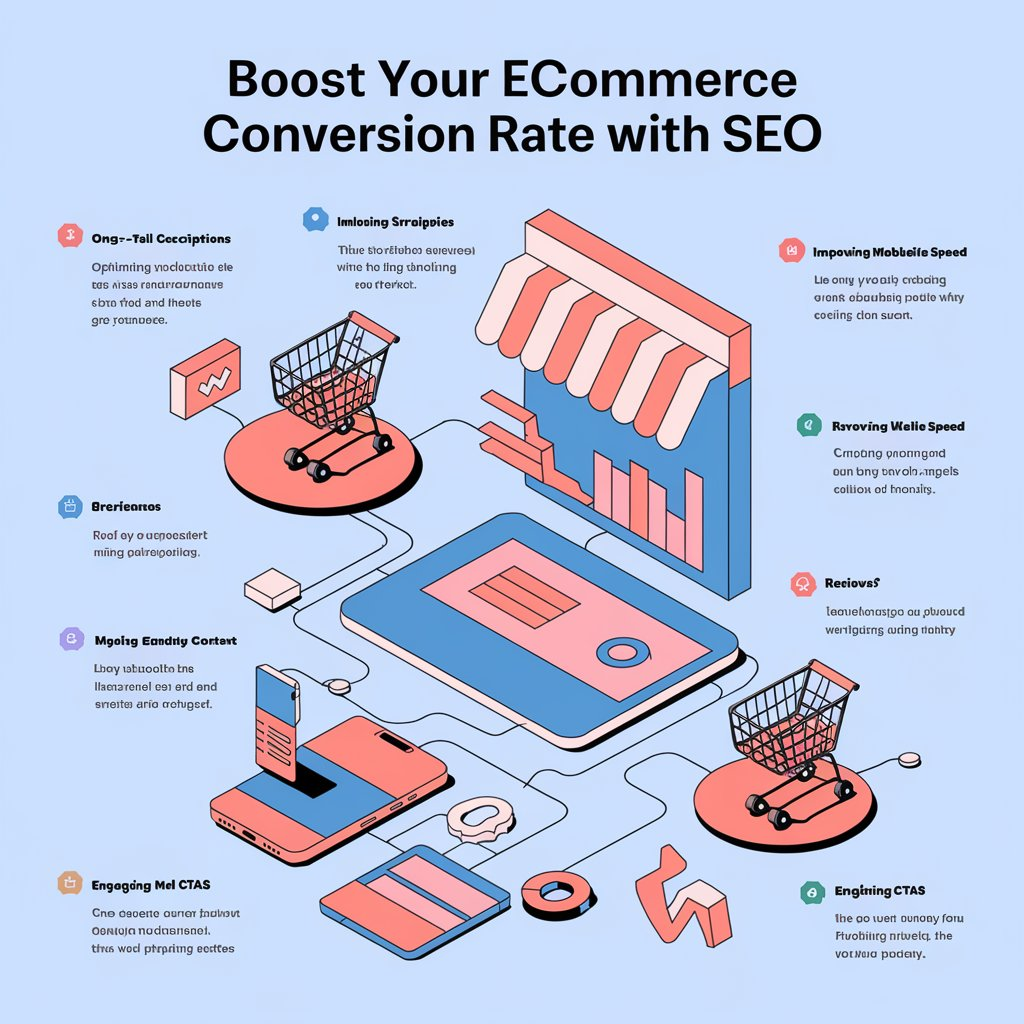
A well-designed site not only attracts more visitors but also keeps them engaged. This increases the chances of them making a purchase, thus boosting your conversion rates. By focusing on UX design, you can ensure that your site is not just visually appealing, but also easy to navigate and use.
Principles of User Experience Design That Boost Conversions
There are several principles of UX design that can help boost your eCommerce conversion rates. Firstly, your site should be intuitive and easy to navigate. Users should be able to find what they’re looking for without any difficulty. Secondly, your site should be responsive, meaning it should work well on all devices, including desktops, tablets, and smartphones.
This ensures that all users, regardless of their device, have a positive experience on your site. Lastly, your site should be visually appealing and consistent in its design. A well-designed, aesthetically pleasing site can enhance trust and encourage users to spend more time exploring your products, increasing the chances of conversion.
Mobile Optimization: A Key to Unlocking Higher Conversion Rates
With more and more people using their smartphones to shop online, mobile optimization has become a necessity for eCommerce businesses. A mobile-optimized site not only ranks higher in search engine results but also provides a better user experience. This is crucial as a poor mobile experience can drive potential customers away, negatively impacting your conversion rates.
On the other hand, a site that is easy to use on a mobile device can attract and retain more customers, leading to higher conversions. Therefore, ensuring that your site is mobile-friendly should be a key part of your eCommerce conversion rate optimization strategy.
Technical SEO: The Foundation of a Convertible eCommerce Site
Technical SEO is the backbone of any successful eCommerce site. It involves optimizing your site’s infrastructure to ensure it’s easily crawlable and indexable by search engines.
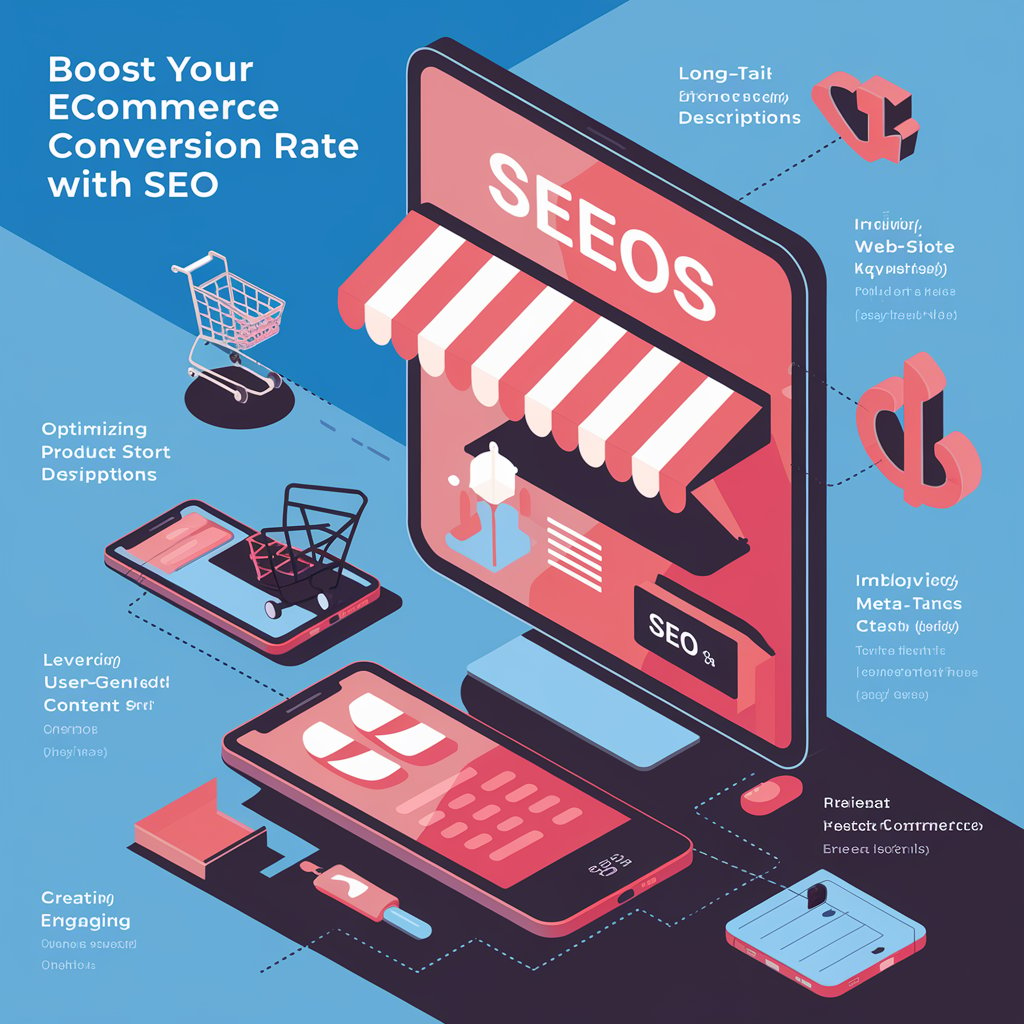
This is crucial as it helps improve your site’s visibility in search engine results, driving more organic traffic to your site. More traffic means more potential customers, which can lead to higher conversion rates. By focusing on technical SEO, you can ensure that your site is not just user-friendly, but also search engine friendly.
Site Architecture and Navigation for Optimal User Experience
The architecture of your site plays a significant role in both SEO and user experience. A well-structured site makes it easy for search engines to crawl and index your pages. It also makes it easy for users to find what they’re looking for, enhancing their overall experience.
A site with clear, intuitive navigation can keep users engaged longer, increasing the chances of them making a purchase. Therefore, when designing your site, it’s important to consider both its architecture and navigation to ensure it’s both SEO-friendly and user-friendly.
Page Load Speed: How It Affects SEO and Conversion Rates
Page load speed is another critical factor in eCommerce conversion rate optimization. A slow-loading site can frustrate users, causing them to leave and potentially never return. This not only reduces your conversion rates but can also harm your search engine rankings.
On the other hand, a fast-loading site can enhance user experience, encouraging users to stay longer and explore more of your products. Therefore, optimizing your site’s load speed should be a key part of your eCommerce conversion rate optimization strategy.
On-Page SEO Strategies for eCommerce Conversion Rate Optimization
On-page SEO is a crucial aspect of eCommerce conversion rate optimization. It involves optimizing individual pages on your site to rank higher in search engine results.
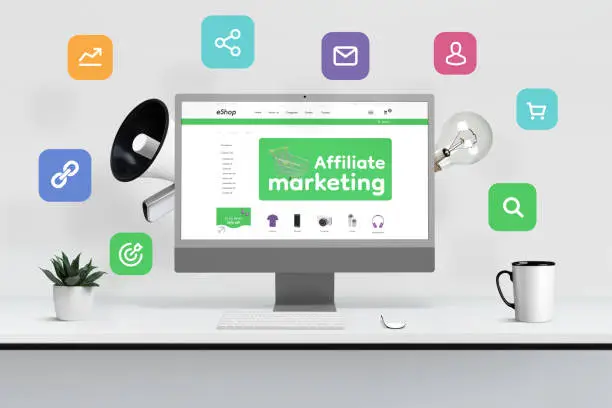
This includes optimizing your content, meta tags, and images, among other elements. By improving your on-page SEO, you can drive more targeted traffic to your site. This, in turn, can lead to higher conversion rates as you’ll be attracting users who are more likely to be interested in your products. Therefore, implementing effective on-page SEO strategies should be a key part of your eCommerce conversion rate optimization efforts.
Product Page Optimization Techniques
Your product pages are where conversions happen. Therefore, optimizing these pages is crucial for improving your eCommerce conversion rate. This involves creating high-quality product descriptions that are both informative and persuasive. It also includes using high-quality images and videos to showcase your products.
Customer reviews and ratings can also be leveraged to build trust and encourage conversions. By optimizing your product pages, you can provide users with the information they need to make a purchase, thereby increasing your conversion rate.
Crafting Compelling Calls-to-Action (CTAs)
Calls-to-action (CTAs) are crucial for driving conversions on your eCommerce site. A well-crafted CTA can guide users towards making a purchase, increasing your conversion rate. Your CTAs should be clear, concise, and compelling, effectively communicating what action you want users to take.
They should also stand out on the page, making it easy for users to locate and click on them. By crafting compelling CTAs, you can guide users through the buying process, making it easier for them to convert. Remember, every element on your page should aim to drive users towards your CTA and, ultimately, a conversion.
Content Marketing and Its Impact on eCommerce Conversions
Content marketing plays a significant role in eCommerce conversion rate optimization. It involves creating and sharing valuable content to attract and engage your target audience.

By providing useful and relevant content, you can build trust with your audience. This can lead to increased brand loyalty and, ultimately, higher conversion rates. Moreover, content marketing can also improve your SEO, helping you attract more targeted traffic to your site. Therefore, a well-executed content marketing strategy can significantly enhance your eCommerce conversion rate optimization efforts.
Creating SEO-Friendly Content That Converts
Creating SEO-friendly content is a key aspect of content marketing. This involves optimizing your content for relevant keywords to improve its visibility in search engine results. However, it’s not just about stuffing your content with keywords. Your content should also be engaging and valuable to your audience.
By creating content that is both SEO-friendly and user-friendly, you can attract more targeted traffic to your site and increase your conversion rate. Remember, the goal of your content should be to provide value to your audience, not just to rank high in search engine results.
The Power of Social Proof in eCommerce
Social proof is a powerful tool for eCommerce conversion rate optimization. It involves using the positive experiences of others to influence your audience’s behavior. This can include customer reviews, testimonials, and social media shares, among other things. By showcasing social proof on your site, you can build trust with your audience and encourage them to convert. Therefore, leveraging social proof should be a key part of your eCommerce conversion rate optimization strategy.
Off-Page SEO Tactics to Improve eCommerce Conversion Rates
Off-page SEO refers to actions taken outside of your own website to impact your rankings within search engine results pages (SERPs). It’s a crucial aspect of eCommerce conversion rate optimization.

Off-page SEO tactics can help improve your site’s reputation and authority. This can lead to higher search engine rankings, more traffic, and ultimately, more conversions. Some key off-page SEO tactics include link building, social media marketing, and influencer outreach. Let’s delve into these tactics in more detail.
Link-Building Strategies for eCommerce Sites
Link building is a critical off-page SEO strategy. It involves acquiring backlinks from other websites to your own. Search engines view backlinks as votes of confidence in your content. Therefore, the more high-quality backlinks you have, the higher your site will rank in search engine results. This can lead to more traffic and higher conversion rates. However, it’s important to focus on the quality of your backlinks, not just the quantity.
Leveraging Social Media for Brand Visibility and Conversions
Social media can also play a significant role in eCommerce conversion rate optimization. By promoting your products on social media, you can reach a wider audience. This can lead to increased brand visibility, more traffic to your site, and higher conversion rates.
Moreover, social media can also provide valuable opportunities for customer engagement. By interacting with your audience on social media, you can build stronger relationships and encourage more conversions.
Conversion Rate Optimization Through Analytics and Testing
Conversion rate optimization (CRO) is not a one-time task. It’s a continuous process of testing, analyzing, and refining your eCommerce site.

This process is driven by data and analytics. By understanding how users interact with your site, you can make informed decisions to improve your conversion rate. Let’s explore two key aspects of this process: A/B testing and analytics.
Utilizing A/B Testing for Continuous Improvement
A/B testing is a powerful tool for CRO. It involves comparing two versions of a webpage to see which performs better. For example, you might test two different headlines, images, or call-to-action buttons. The version that leads to a higher conversion rate is the winner. By continuously testing and refining your site, you can optimize your conversion rate over time.
Analytics: Measuring and Understanding Your Conversion Data
Analytics is the backbone of CRO. It involves collecting and analyzing data about your website visitors and their behavior. This can include data on traffic sources, user demographics, on-site behavior, and conversion rates. By understanding this data, you can identify areas of your site that are underperforming and need improvement. Moreover, analytics can help you measure the success of your CRO efforts and guide your future strategies.
The Benefits of Partnering with an eCommerce Conversion Rate Optimization Agency
Working with an eCommerce conversion rate optimization agency can be a game-changer. These agencies specialize in improving conversion rates for online businesses. They bring a wealth of knowledge and experience to the table. They can provide fresh insights and innovative strategies to boost your conversion rate. Moreover, they can save you time and resources by handling the complex tasks of CRO.
How an Agency Can Enhance Your CRO Efforts
An eCommerce CRO agency can provide a comprehensive approach to optimization. They can conduct a thorough audit of your site to identify areas for improvement. They can also implement proven strategies and best practices to enhance your conversion rate.
For instance, they can optimize your site’s design, improve your SEO, and refine your checkout process. Moreover, they can provide ongoing testing and analytics to ensure continuous improvement.
Case Studies: Success Stories from CRO Agencies
There are many success stories of businesses that have significantly improved their conversion rates with the help of a CRO agency. For example, one online retailer saw a 30% increase in conversions after implementing the agency’s recommendations.

Another eCommerce site doubled its conversion rate after a complete site redesign guided by the agency. These case studies demonstrate the potential impact of partnering with a CRO agency. They show that with the right strategies and expertise, you can significantly improve your eCommerce conversion rate.
Conclusion and Next Steps for Maximizing Your eCommerce Conversion Rates
Improving your eCommerce conversion rate is a continuous process. It requires a strategic approach and a commitment to ongoing optimization. By implementing the strategies discussed in this guide, you can significantly enhance your conversion rate. Remember, the key is to focus on providing a seamless user experience. This includes optimizing your site’s design, improving your SEO, and refining your checkout process.
eCommerce CRO Checklist
To help you get started, here’s a quick checklist of key steps for eCommerce conversion rate optimization:
- Conduct a thorough audit of your site to identify areas for improvement.
- Implement a responsive design to ensure a seamless user experience across all devices.
- Optimize your product pages with high-quality images, compelling descriptions, and clear calls-to-action.
- Improve your site’s load speed to enhance user experience and SEO.
- Implement a secure and user-friendly checkout process to reduce cart abandonment.
- Leverage social proof through customer reviews and testimonials.
- Conduct ongoing A/B testing to identify the most effective strategies.
- Use analytics to track your performance and inform your optimization efforts.
Continuous Learning and Adaptation in eCommerce SEO and CRO
The world of eCommerce is constantly evolving. To stay competitive, you need to keep up with the latest trends and best practices in SEO and CRO. This includes staying informed about changes in search engine algorithms, emerging technologies, and shifts in consumer behavior.
By continuously learning and adapting, you can ensure that your eCommerce site remains optimized for conversions and continues to drive sales and revenue.


